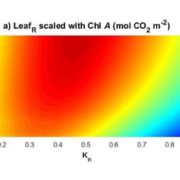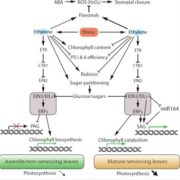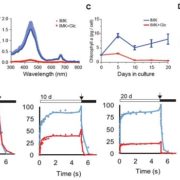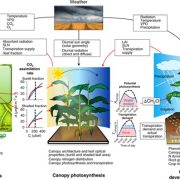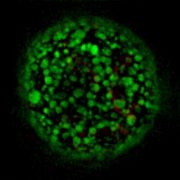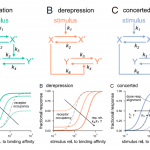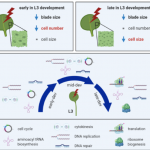Bundle sheath suberisation is required for C4 photosynthesis in a Setaria viridis mutant (Nature Comms)
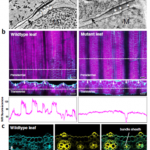 An efficient C4 photosynthetic pathway relies on the coordination between the biochemical carbon concentration mechanism that secures high rates of C4 acid flow into the bundle sheath (BS) and anatomical modifications that minimize CO2 leakage out of the BS cells. Suberin deposition in BS cell walls has been believed to seal BS cells against leakiness of CO2 in NADP-ME C4 grasses; however, direct evidence proving suberin’s role was lacking. Through screening of the N-nitroso-N-methylurea induced Setaria viridis (a C4 NADP-ME) mutants for impaired photosynthesis, Danila et al. isolated a mutant with an SNP in the coding region of an ABCG transporter gene (Sevir.9G451500) that was expressed exclusively in the developing leaf section of the C4 NADP-ME species – maize and Setaria, but not the C3 species rice. Cell wall imaging confirmed deposition defect and GC/MS analysis detected a 50% reduction of aliphatic suberin component in the bundle sheath cells of the mutants providing direct evidence in the role of Sevir.9G451500 in suberin synthesis. The mutants exhibited a higher BS conductance to CO2 due to suberin defect, grew poorly in ambient CO2, and showed reduced biomass production, CO2 assimilation rate, and stomatal conductance in high CO2. With elaborate physiological evaluation, Danila et al. linked the leaky BS to the cell wall suberin defect and verified that bundle sheath suberin lamella is an essential ingredient to assemble an efficient C4 pathway in NADP-ME C4 grasses. (Summary by Roxana Khoshravesh @RoxiKh) Comms. Biol. 10.1038/s42003-021-01772-4
An efficient C4 photosynthetic pathway relies on the coordination between the biochemical carbon concentration mechanism that secures high rates of C4 acid flow into the bundle sheath (BS) and anatomical modifications that minimize CO2 leakage out of the BS cells. Suberin deposition in BS cell walls has been believed to seal BS cells against leakiness of CO2 in NADP-ME C4 grasses; however, direct evidence proving suberin’s role was lacking. Through screening of the N-nitroso-N-methylurea induced Setaria viridis (a C4 NADP-ME) mutants for impaired photosynthesis, Danila et al. isolated a mutant with an SNP in the coding region of an ABCG transporter gene (Sevir.9G451500) that was expressed exclusively in the developing leaf section of the C4 NADP-ME species – maize and Setaria, but not the C3 species rice. Cell wall imaging confirmed deposition defect and GC/MS analysis detected a 50% reduction of aliphatic suberin component in the bundle sheath cells of the mutants providing direct evidence in the role of Sevir.9G451500 in suberin synthesis. The mutants exhibited a higher BS conductance to CO2 due to suberin defect, grew poorly in ambient CO2, and showed reduced biomass production, CO2 assimilation rate, and stomatal conductance in high CO2. With elaborate physiological evaluation, Danila et al. linked the leaky BS to the cell wall suberin defect and verified that bundle sheath suberin lamella is an essential ingredient to assemble an efficient C4 pathway in NADP-ME C4 grasses. (Summary by Roxana Khoshravesh @RoxiKh) Comms. Biol. 10.1038/s42003-021-01772-4


